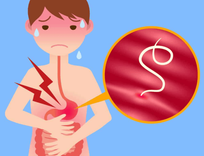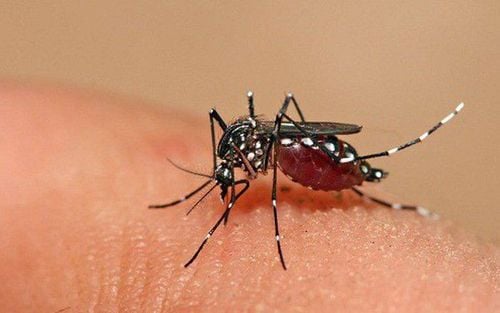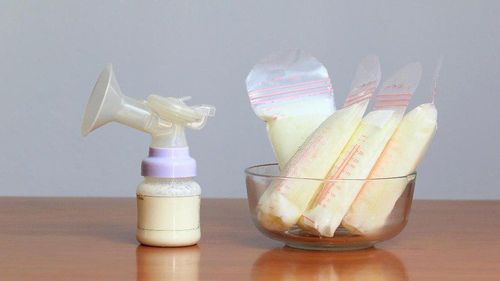This article is consulted by: Specialist level 1 Doctor Nguyễn Hữu Nam - A Pediatrician and Neonatologist - Department of Pediatrics & Neonatology - Vinmec Nha Trang International Hospital.
The condition of babies spitting up milk through the nose happens very often because their stomach is still horizontal.Although it rarely can be too dangerous, mothers should still be careful to prevent milk from entering the respiratory tract, causing difficulty breathing, even too severe causing death.
1. Why do children spit up through their noses?
Breastfeeding helps both ensure essential nutrition for babies and strengthen the bond between mothers and babies. However, having too much milk is not always favorable because when the baby cannot suck fast enough, it will lead to the baby spitting up.
In general, baby spitting up milk through the nose is usually because:
- Too much milk: inconvenient to both mother and baby. This makes mothers have to try different positions when breastfeeding to make it easier for the baby to receive milk and limit the possibility of choking;
- Fast milk flow: Too much breast milk will lead to faster and stronger milk production. Therefore, if the milk flows fast but the children cannot swallow it in time, they will spit up through noses;
- Inappropriate bottle feeding: If the mother is bottle-feeding the baby, choking can still occur if the nipple is not fit the baby's mouth, she feed in the wrong position;
- Feeding too much or feeding while crying
2. What to do when babies spit up through the nose?
It's normal for babies to spit up while being breastfed. In most cases, mothers just need to stop breastfeeding and hold the baby upright while patting the back gently, the baby can feel more comfortable. If the child is awake but still coughing and having difficulty breathing because of choking on milk, parents should give first aid to the child with the following steps:
2.1. Back patting
Place the baby on the stomach with the head lower. Use one hand to support the neck and chest of the child, the other hand to pat 5 times continuously with moderate force between the child's shoulder blades. After patting, gently turn the child back. If you see that the child’s skin still has not come back ruddy color or has not breathed normally again, then:
2.2. Chest compressions
Holding the baby on their back, place 2 fingers (index and middle fingers) in the center of the baby's chest and press down on the breastbone 5 times continuously. This will help push air out of your baby's lungs and clear the blockage.
Parents should repeat the above 2 first aid activities which are patting the back and pressing the chest several times until the child feels comfortable and the breathing rate returns to normal. If the child is still pale, still coughing, having difficulty breathing, or unconscious, take immediate action.
2.3. Call 911, contact help
Place the child on their back on a firm and hard surface, do CPR for the child. Note that parents need to be guided before with the basic knowledge and practice of first aid.
In the meantime, contact medical facilities to take the child to any hospital immediately if necessary.

3. How to prevent children from spitting up through their noses?
To prevent children from spitting up through their noses, parents should know 2 very important basic things:
3.1. Breastfeeding in comfortable position
If there is too much milk and the strong flow of milk makes the baby unable to swallow, the mother needs to put the baby's head higher than the nipple when feeding to avoid choking.
When holding the baby in her arms and nursing, the mother can sit back slightly to slow down the milk flow. In addition, some breastfeeding positions such as “the rugby ball hold” or placing the baby on their side will help both feel comfortable and limit the risk of choking. Mothers can also help burp the baby by holding the baby upright after feeding, rubbing the baby's back gently.
In case the baby often chokes on milk when bottle-feeding, parents should choose to buy a bottle with an appropriate nipple for the child’s age. When breastfeeding, the bottom of the bottle should be raised slightly so that the milk fills the nipple so that the baby does not swallow too much air. At the same time, the bottle should be tilted 45 degrees for the baby to easily control the flow of milk and avoid choking when feeding.

3.2. Adjust the milk flow to meet the baby's needs
If there is too much milk and the milk flows too fast for the baby, that is the main cause of choking. Therefore, mothers can follow these ways to reduce milk production:
- Express some milk before each feeding. However, in order to stop producing more milk, the mother should note that the next session should be less than the previous one;
- Avoid scrubbing when bathing to limit the stimulation of milk secretion;
- Feed your baby on one breast for several consecutive feedings (4 hours) to know the lactation activities of each breast. This will help reduce some of the stimulation that the other breast receives, thereby limiting the amount of milk secreted;
- Apply a cold compress between feeds to reduce milk production.
- In more difficult cases, you can consult your doctor to use herbs to safely control the milk flow without milk loss.
Mothers can adjust the amount of milk secreted in one feeding by: pulling out or clamping the nipple with your hand for the baby not to suck continuously and slow down the flow of milk. This is especially useful for premature babies - who have poor sucking and swallowing reflexes, so they need to do it slowly and slowly.
If the mother has tried to reduce milk production and has the correct position but the baby still spits up, the best way is to take the baby to the doctor. Pediatricians will help the family find out the causes and treat them in time to help avoid the risks of choking on milk.
Please dial HOTLINE for more information or register for an appointment HERE. Download MyVinmec app to make appointments faster and to manage your bookings easily.













